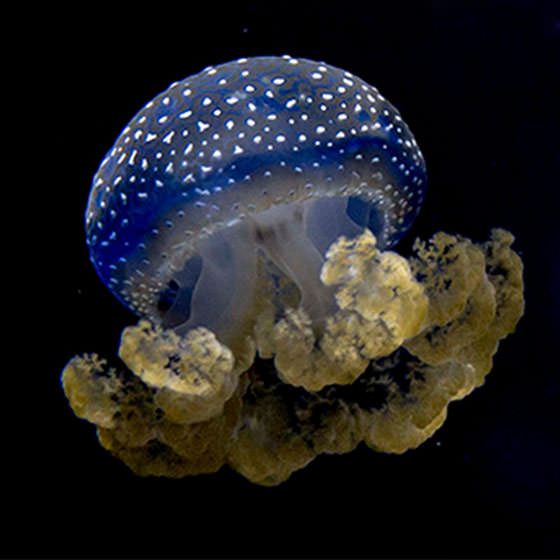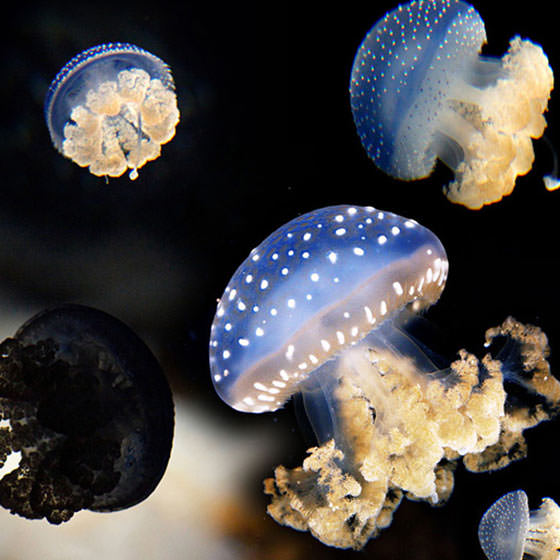Biology
Like all jellyfish, it has stinging tentacles. Although its sting is harmless to humans, it can paralyse small prey like floating organisms and fish eggs and larvae.
According to scientists, it can ingest more than 2,000 eggs a day.

Like all jellyfish, it has stinging tentacles. Although its sting is harmless to humans, it can paralyse small prey like floating organisms and fish eggs and larvae.
According to scientists, it can ingest more than 2,000 eggs a day.

Its tentacles are located under the umbrellas, where its branching, cauliflower shaped oral arms end. Its paralysed prey is then absorbed by orifices that connect to the central stomach, which is why the white-spotted jellyfish belongs to the order of Rhizostomae, which translates as ‘mouth shaped like roots’.
It is related to the large jellyfish we often see near our shores, called ‘lungs of the sea’, Rhizostoma pulmo. Its maximum size is 60 cm in diameter.

Transported in the ballast of boats, it was accidentally introduced into the Gulf of Mexico.
Considered an invasive species, it multiplied at an alarming rate, while consuming large quantities of fish eggs and larvae.